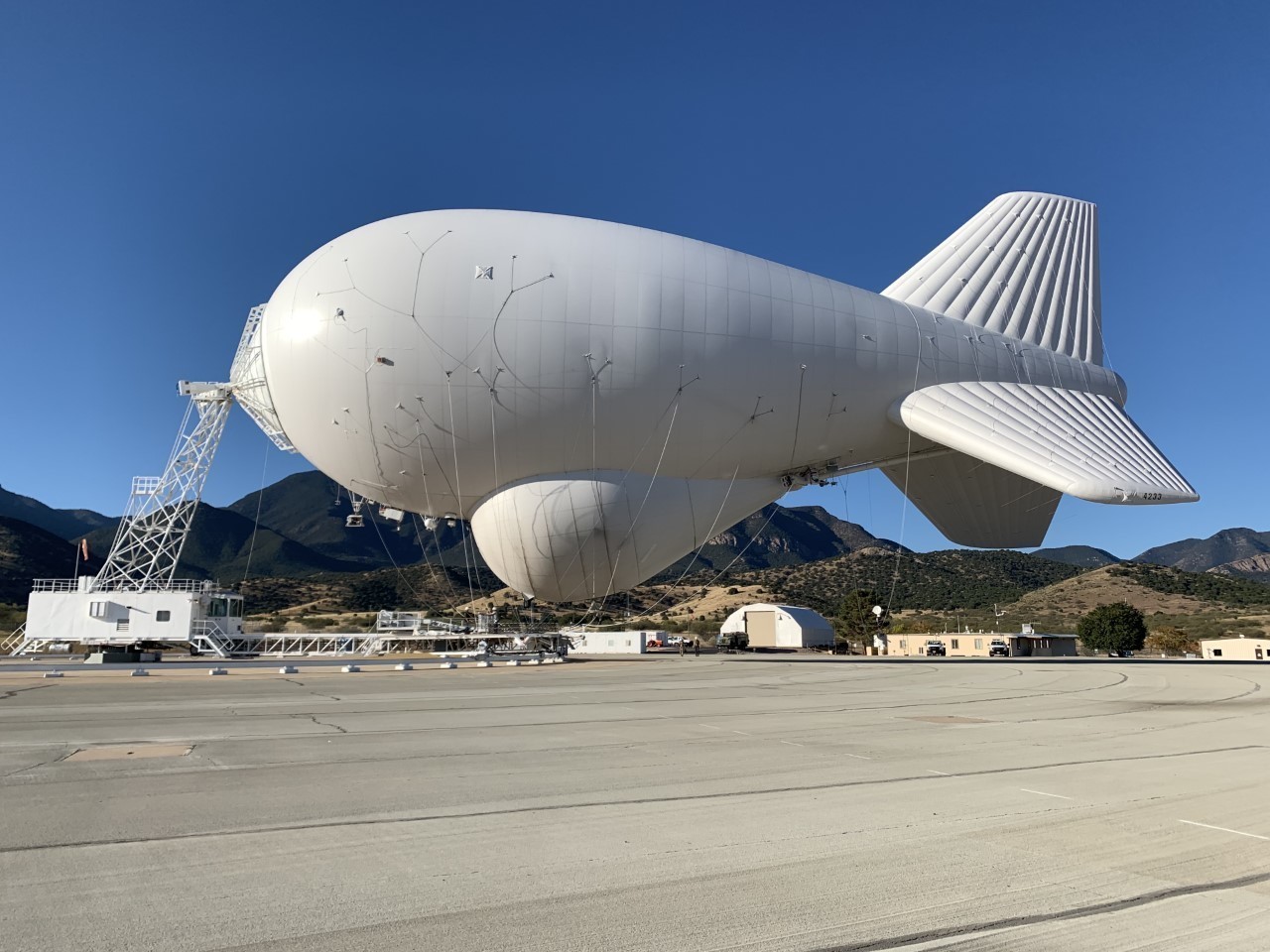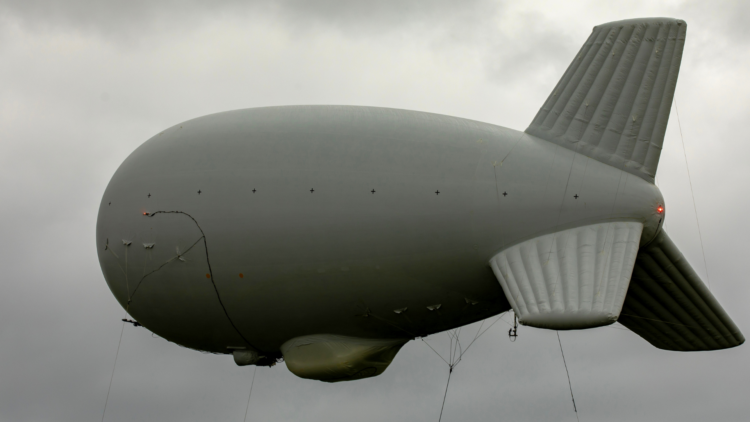In an ever-evolving landscape of military operations, the US Army is turning to a tried and tested technology to meet the challenges posed by advanced adversaries like Russia and China.
Aerostats, the blimp-like aircraft tethered to the ground, are making a comeback as the Army seeks to reinvigorate its aging fleet to serve as elevated surveillance and communication platforms. This revitalization effort marks a strategic shift away from the counterinsurgency focus of the past decades towards a more versatile and forward-looking role in the Army’s 2030 vision.
A New Era for Aerostats
Lareina Adams, a project manager for terrestrial sensors within the Army’s Program Executive Office for Intelligence, Electronic Warfare, and Sensors (PEO IEW&S), shared insights during an interview at the recent Association of the United States Army (AUSA) convention in Washington.
Adams underscored the need to reimagine the potential of aerostats in response to the new military landscape, which increasingly demands adaptability, autonomy, and cutting-edge technology.
“Aerostat, I think, is synonymous with the old fight, counterinsurgency,” Adams stated, emphasizing the need for change.
She continued, “What we’re trying to see is if we can expand the applicability of the aerostat to other missions that will support the Army in 2030.”
The crux of this revitalization effort is to equip aerostats with autonomous capabilities, which promises to reduce logistical and staffing needs while enhancing operational versatility.
Although details remain scarce, autonomous features have already been observed in recent demonstrations. These innovations open the door to an array of possibilities, including the deployment of counter-drone payloads, which could be a game-changer in the ongoing battle against the proliferation of drones in modern warfare.
Historical Significance of Aerostats
Aerostats have a rich history in military operations. They first came to prominence during World War I and World War II when they were known as “barrage balloons.” These tethered balloons, equipped with steel cables, served as a defensive measure against low-flying enemy aircraft.
Over time, aerostats evolved – becoming instrumental in military surveillance and reconnaissance.

Key examples of aerostat systems used by the US Army include the Persistent Threat Detection System (PTDS) and the Joint Land Attack Cruise Missile Defense Elevated Netted Sensor System (JLENS). These systems have been utilized for a variety of military applications, including surveillance, threat detection, and border security.
Collaborative Reimagination: Engaging the Requirements Community and Industry
The latest revitalization process lies in the collaboration between the Army’s requirements community and industry experts. Lareina Adams and her team are working closely with these stakeholders to understand the evolving needs of the Army and to harness advancements in technology.
“One of my priorities is to help reimagine aerostats,” Adams affirmed. “We’re starting to have those conversations with the requirements community within the Army to figure out what the needs are. We’re also looking at industry, as well, to see what advancements they’ve made.”
This cross-sector collaboration is crucial in ensuring that aerostats are equipped with the latest technology and capabilities to meet the demands of modern warfare.
With China and Russia’s military capabilities continuing to advance, the US Army recognizes the necessity of modernizing its assets and maintaining a technological edge.
Persistent Surveillance and Communication
Aerostats are well-suited to meet these evolving challenges thanks to their ability to provide persistent surveillance and communication over a specific area. They can stay aloft for extended periods, offering a cost-effective solution for maintaining aerial presence and enhancing situational awareness.
In addition to their surveillance capabilities, aerostats can serve as communication platforms. By equipping them with advanced communication systems, they can function as relays for radio, data, and video communications, thereby enhancing the Army’s ability to maintain secure and reliable communications over long distances.
The inclusion of radar and sensor systems further enhances their utility. Aerostats can detect and track various potential threats, including aircraft, drones, ground vehicles, and other hostile assets. This early warning capability is invaluable in modern military operations, where real-time threat detection is critical.
The Crucial Role of Aerostats in Recent Conflicts and Modernization Efforts
Aerostats have already played a vital role in recent conflicts, particularly in counterinsurgency and counter-improvised explosive device (IED) efforts in the Middle East. Their ability to provide persistent surveillance has greatly improved situational awareness on the battlefield, reducing the risk to troops and enhancing the Army’s ability to respond to threats effectively.
The revitalization of aerostats is part of a broader effort within the Army’s PEO IEW&S—responsible for developing and deploying a wide range of technologies, from aerostats to electronic jammers, biometric devices, and soldier-carried navigation tools, to meet the service’s evolving operational needs.
As the US Army reinvigorates its fleet of aerostats, it underscores the military’s commitment to adapt to the challenges posed by advanced adversaries. With the integration of autonomous capabilities and cutting-edge technology, aerostats are poised to play a crucial role in the service’s future operations, ensuring that the US remains prepared and capable in the ever-changing landscape of modern warfare.










COMMENTS
You must become a subscriber or login to view or post comments on this article.